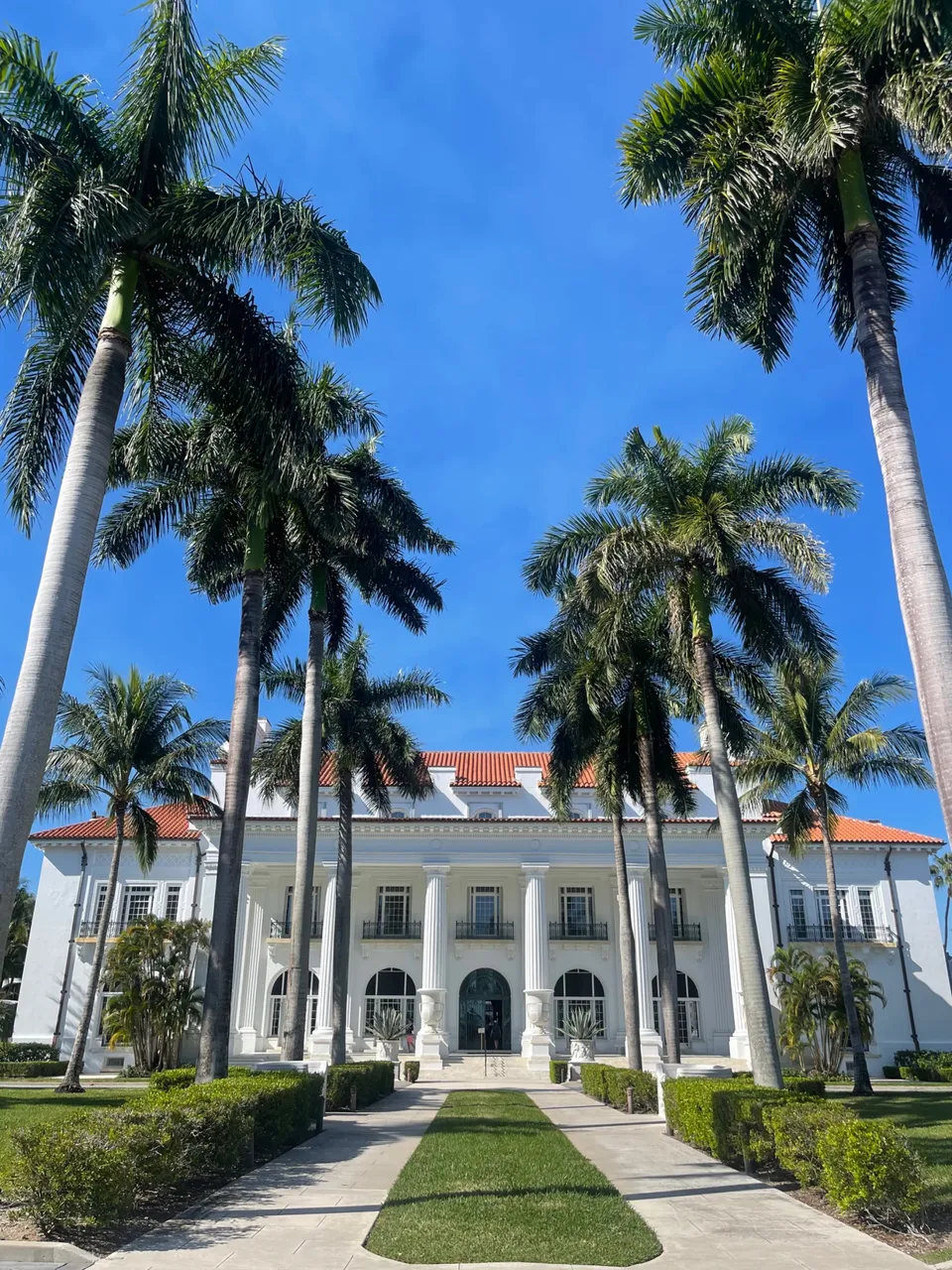
Henry Flagler Biography.
Henry was born on January 2, 1830. Henry Flagler’s father was a Presbyterian minister. Henry was just 14 years old when he moved from New York to Ohio to live with his mother’s family. There he learned how to be a successful businessman while working in his cousin’s store. Henry had success in the grain industry.
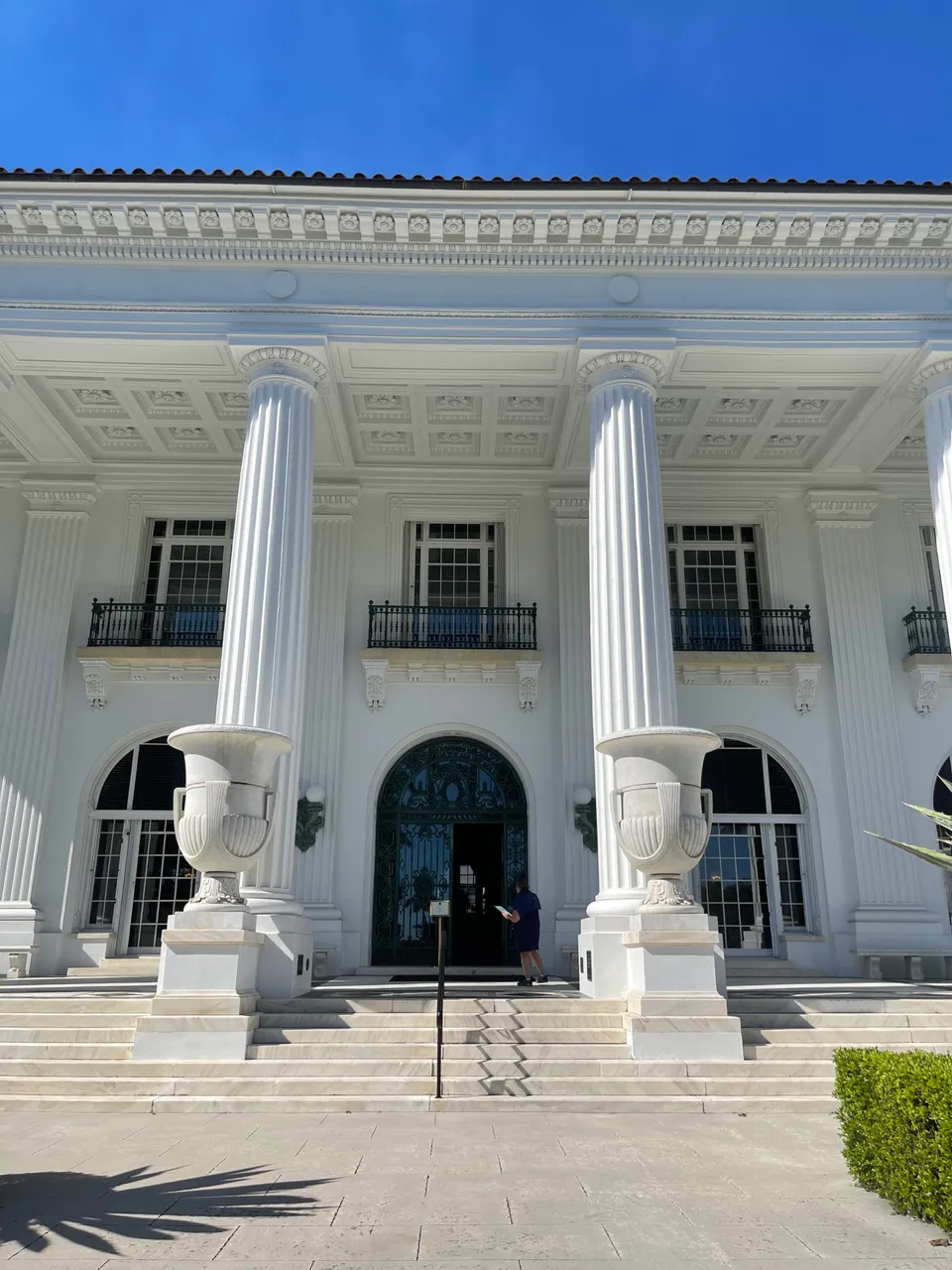
Later he founded a salt mining and production business. Flagler joined John D. Rockefeller and Samuel Andrews as a founding partner in the Standard Oil Company in 1867.
In 1880s Flagler got interested in developing Florida.
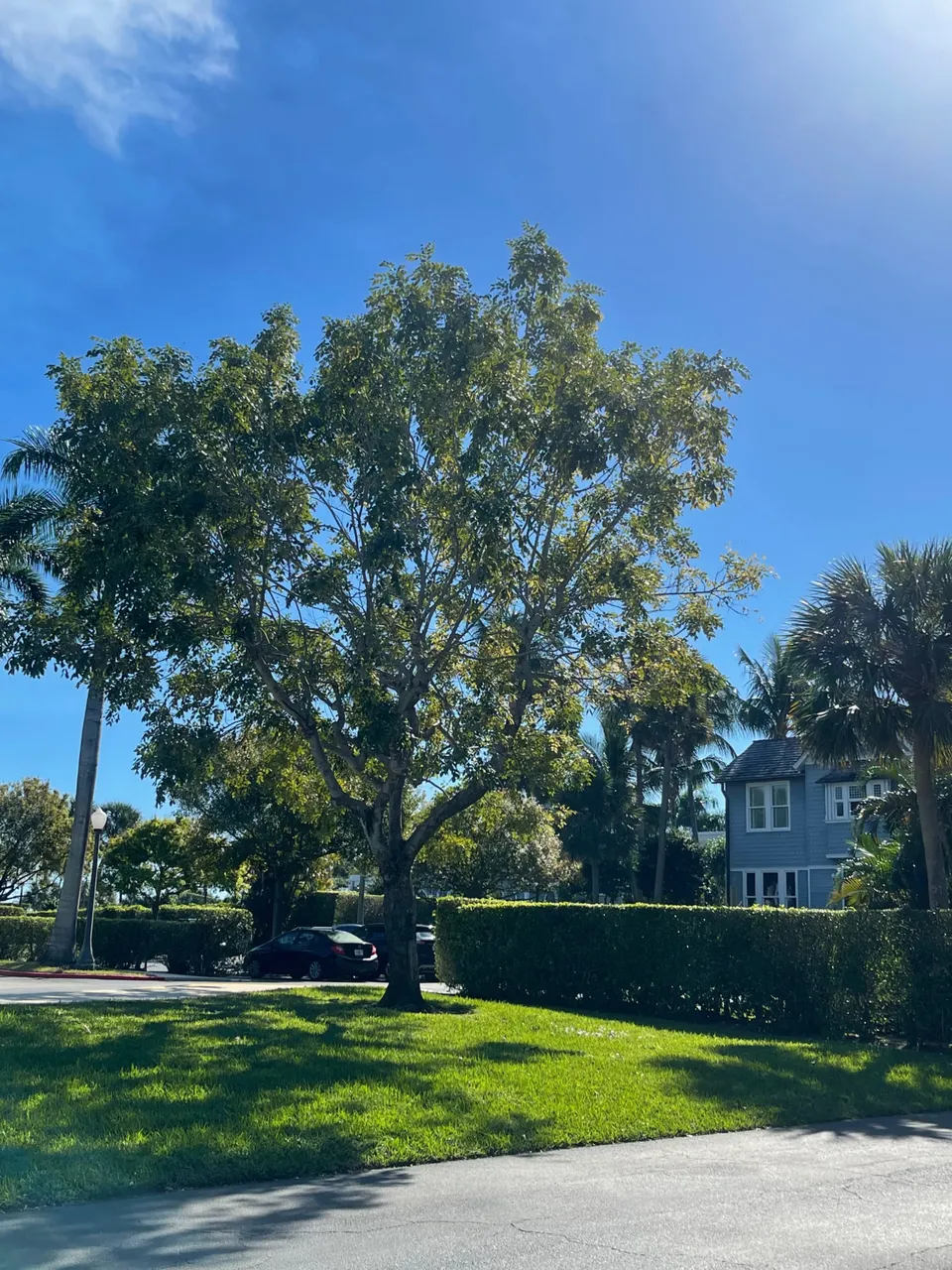
Flagler's Florida East Coast Railway, and the luxury hotels he built along the way, linked the entire east coast of Florida from Jacksonville to Key West. Henry established
agriculture and tourism as Florida's leading industries and Palm Beach as one of the
world's great winter resorts.
A large part of Henry Flagler's commitment in Palm Beach County and throughout Florida was to establish communities by helping to build the necessary infrastructure. In 1901 Henry Flagler wrote that "...little settlements are fast springing up along the line of my railroad property South. The first needs of the people are school houses and churches, and I am assisting them all as well as I can. In 1889 Flagler built St. Augustine's first Presbyterian church, named the Memorial Presbyterian Church in memory of his daughter, Jennie Louise Flagler Benedict, who died as a result of childbirth. A mausoleum for the family was constructed in the church as the final resting place for Jennie, her infant daughter, Henry Flagler, and his first wife, Mary Harkness Flagler.
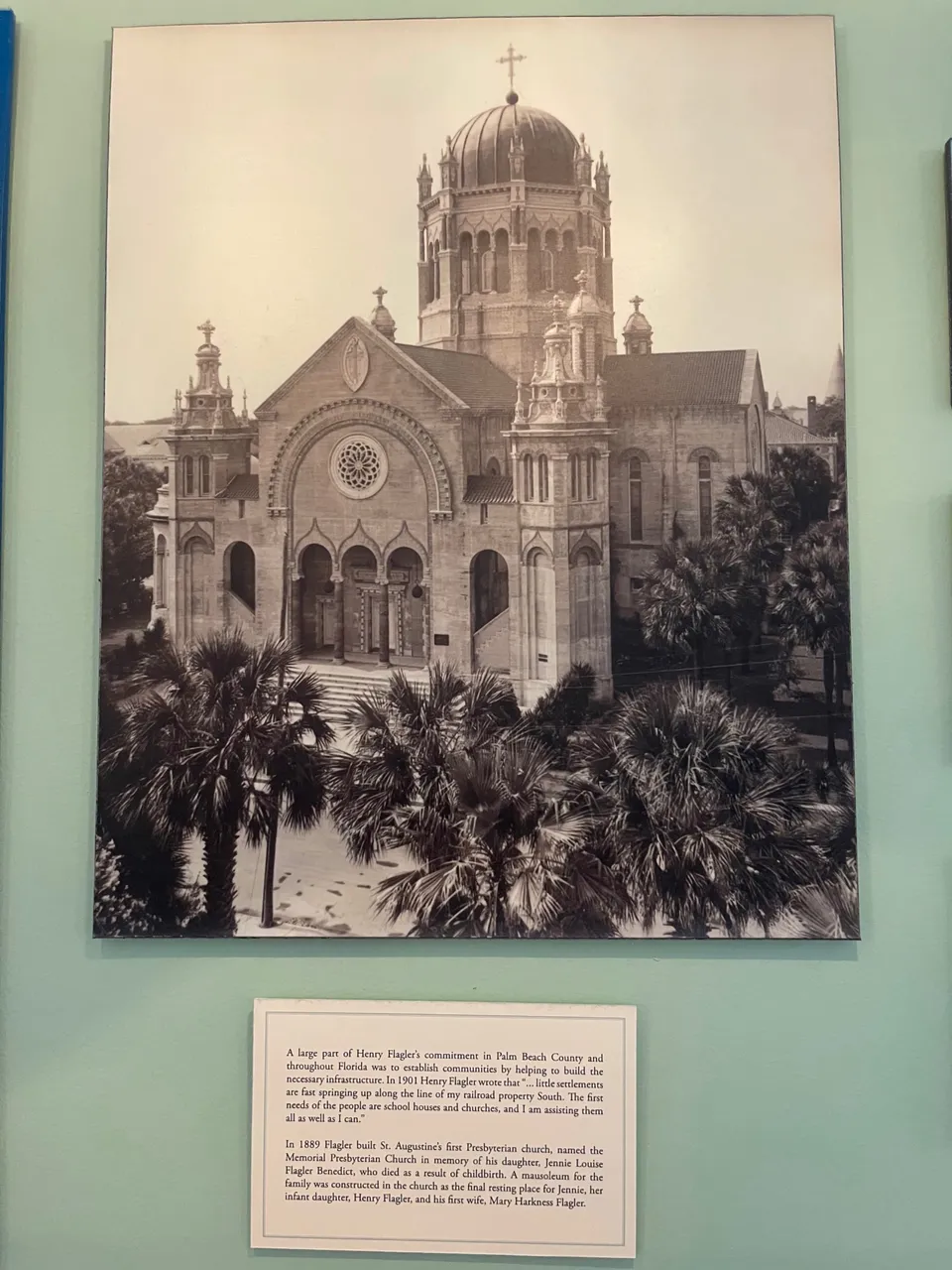
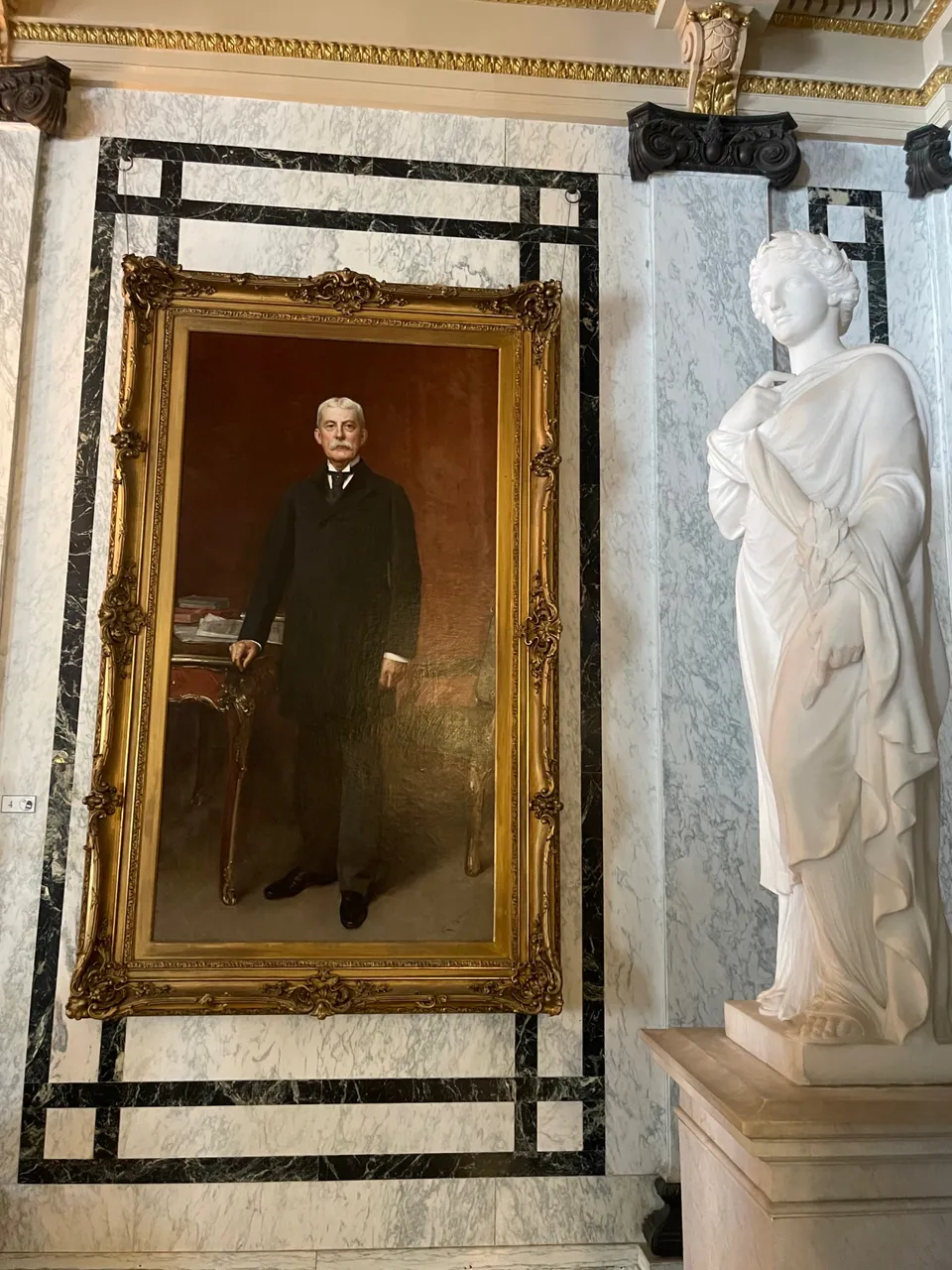
Flagler’s well known Whitehall was built in 1902. Whitehall was a winter retreat
and wedding present for his wife, Mary Lily Kenan Flagler. It has more than 75 rooms. Architects John Carrère and Thomas Hastings designed Whitehall in the Beaux Arts style. This architecture style become popular at that time.
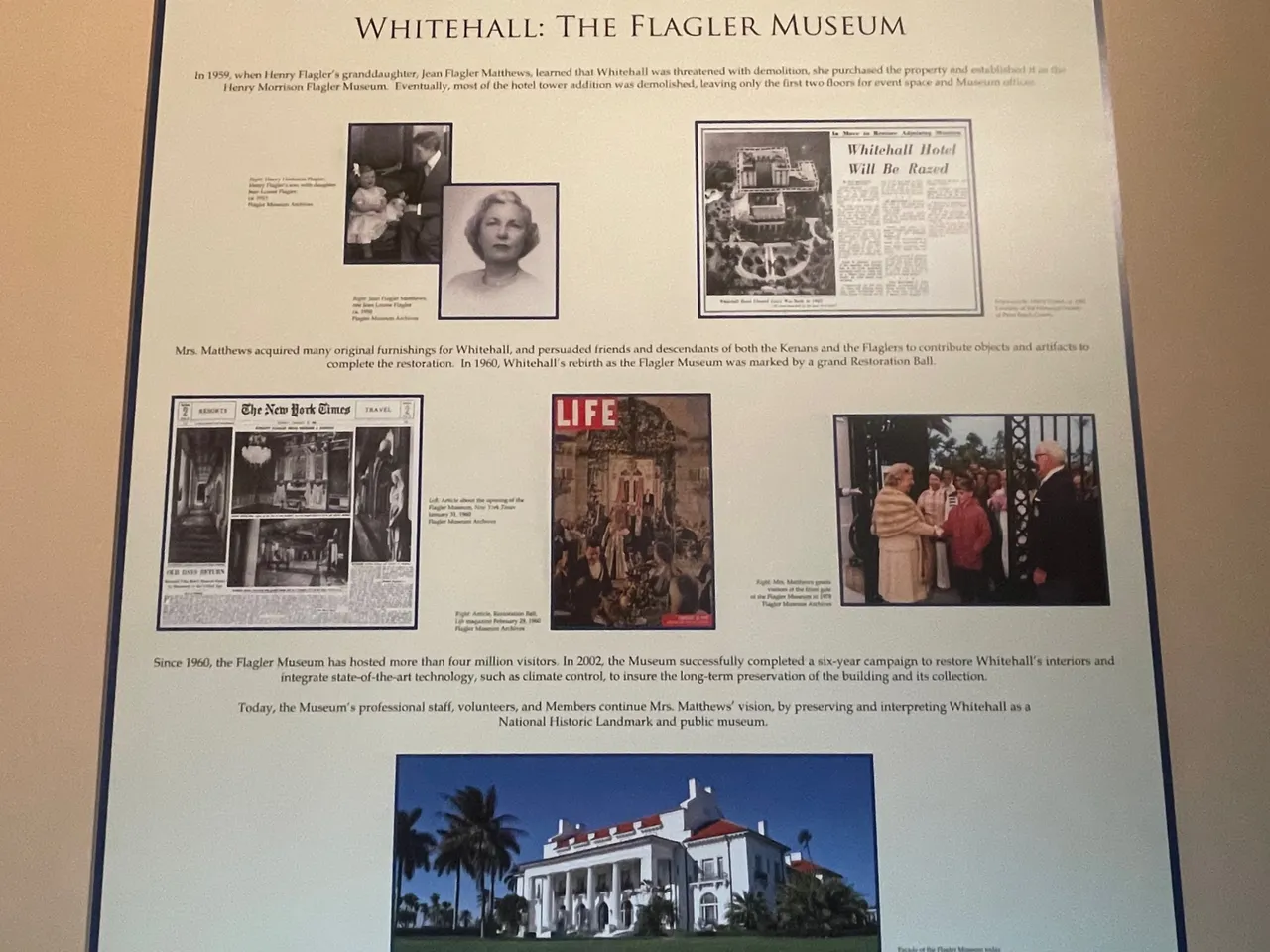
Whitehall was built during America's Gilded Age, which lasted from the end of the Civil War to the 1929 Stock Market Crash. Automobiles, telephones, electric lights, indoor plumbing, and virtually everything we take for granted today came into being during this time. Can you imagine how rich people lives changed?! Now poor people were even more contrasting with rich people.
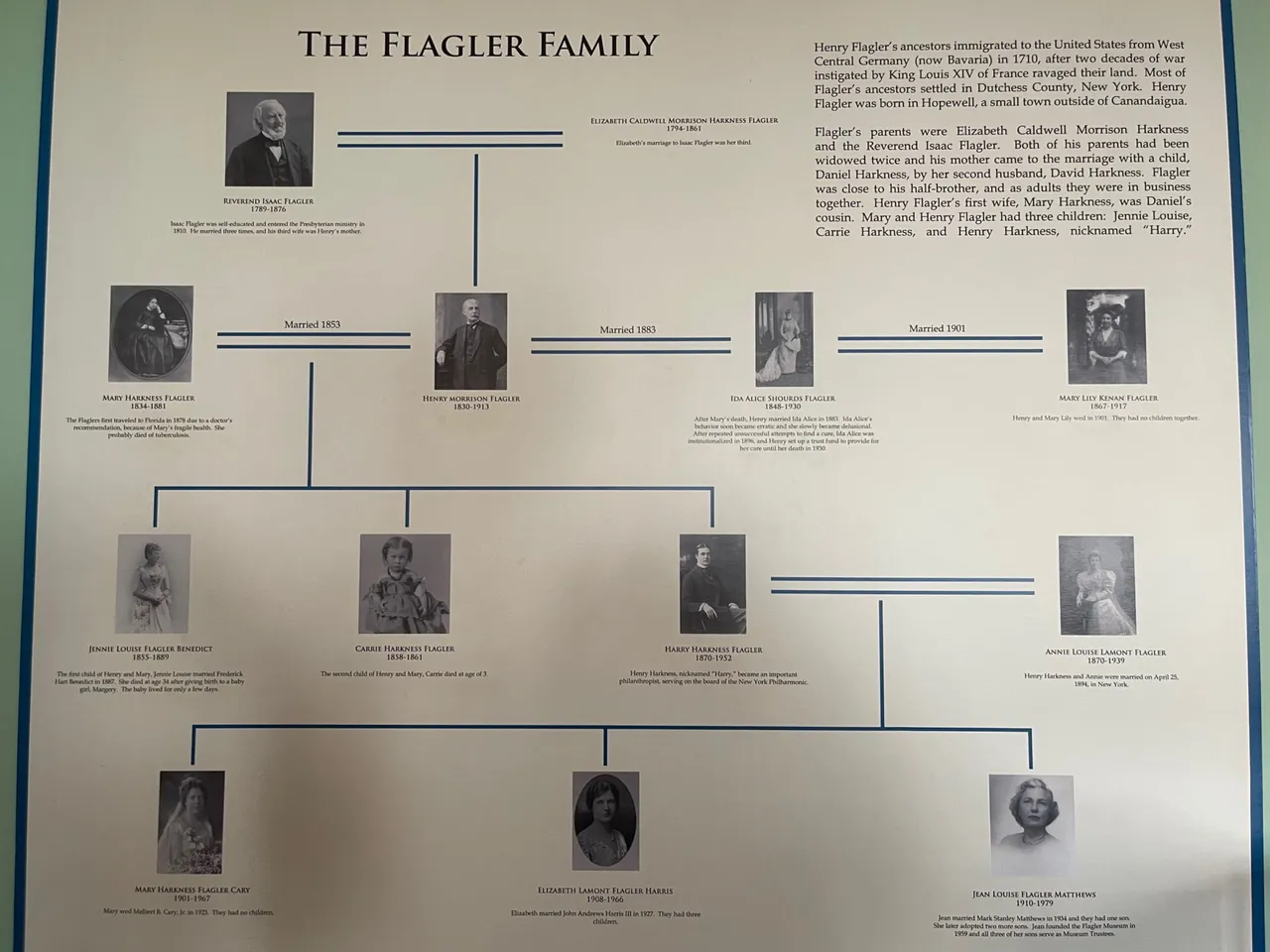
Exterior.
The Whitehall is facing rising sun, it has Doric columns this supposed to make a visitors feel they came to Apollo’s temple the Sun god.

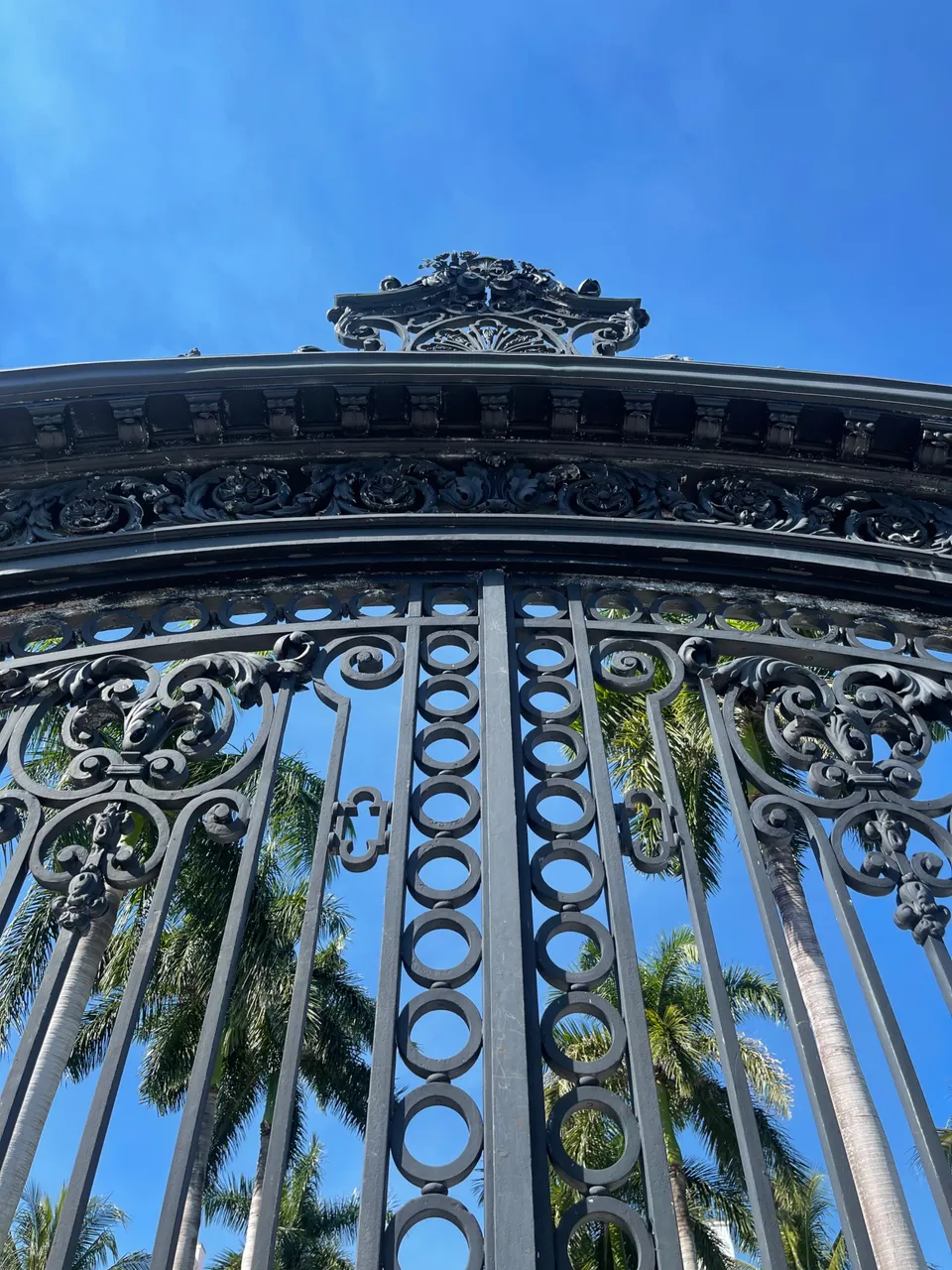
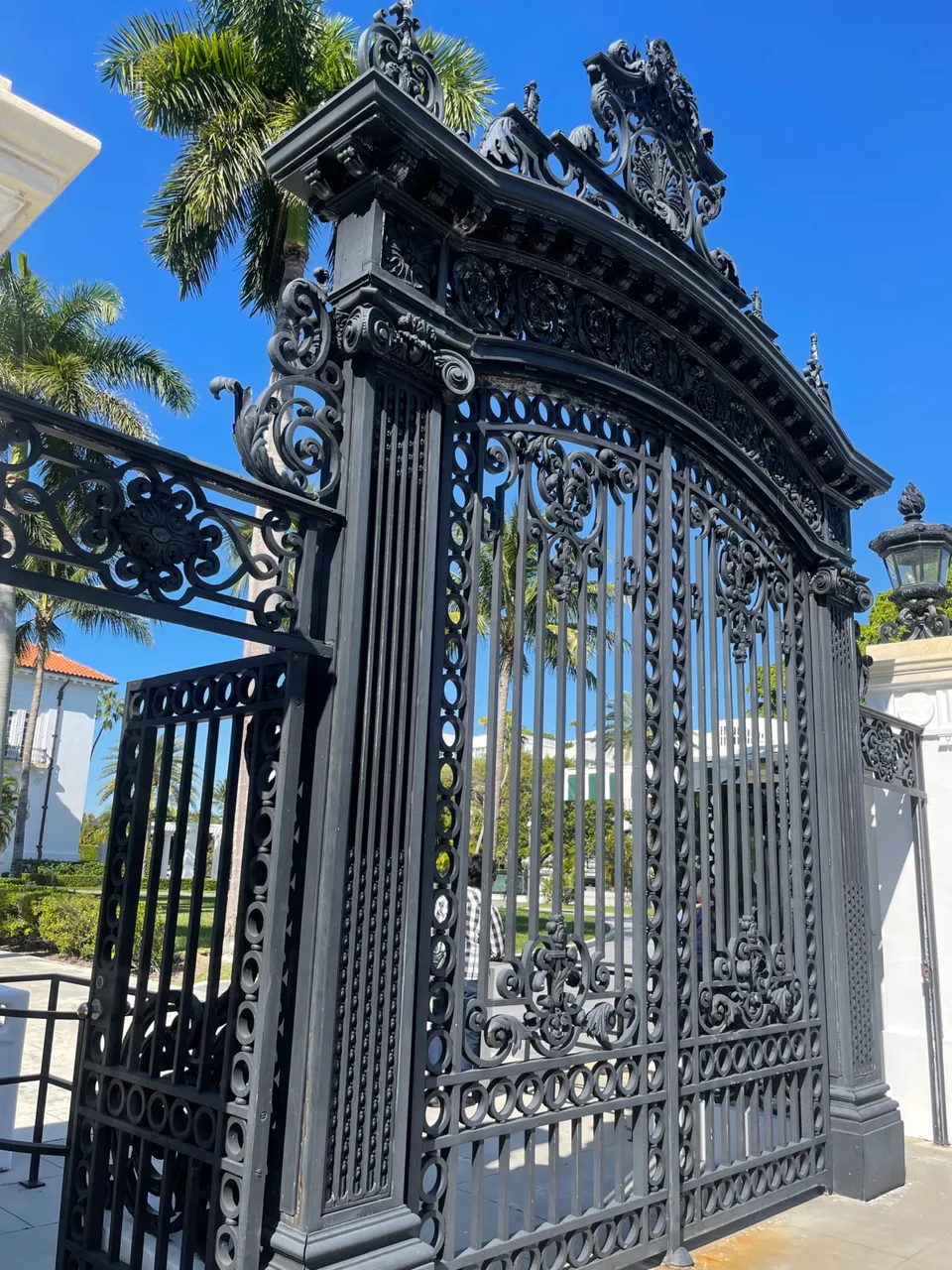
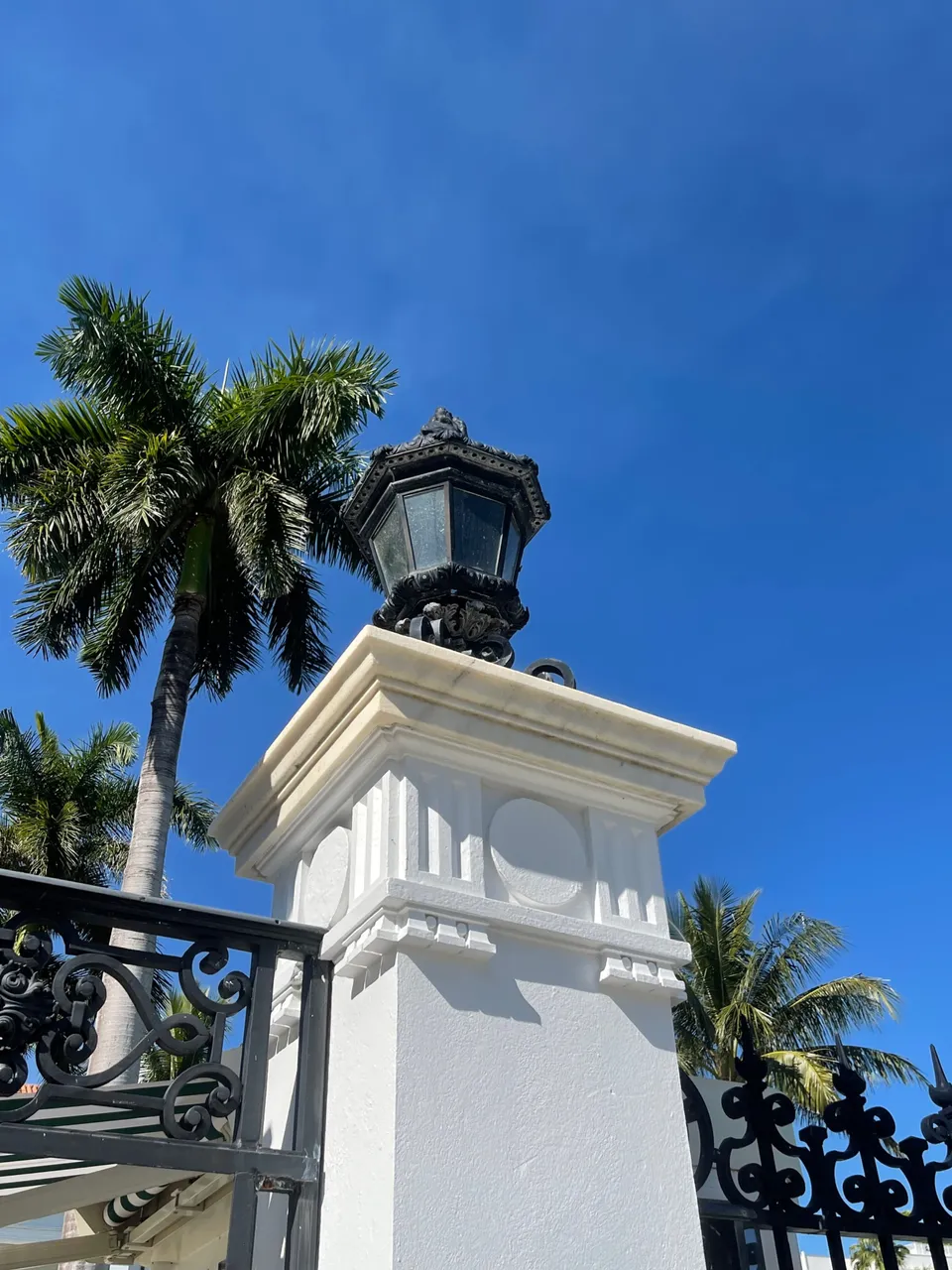
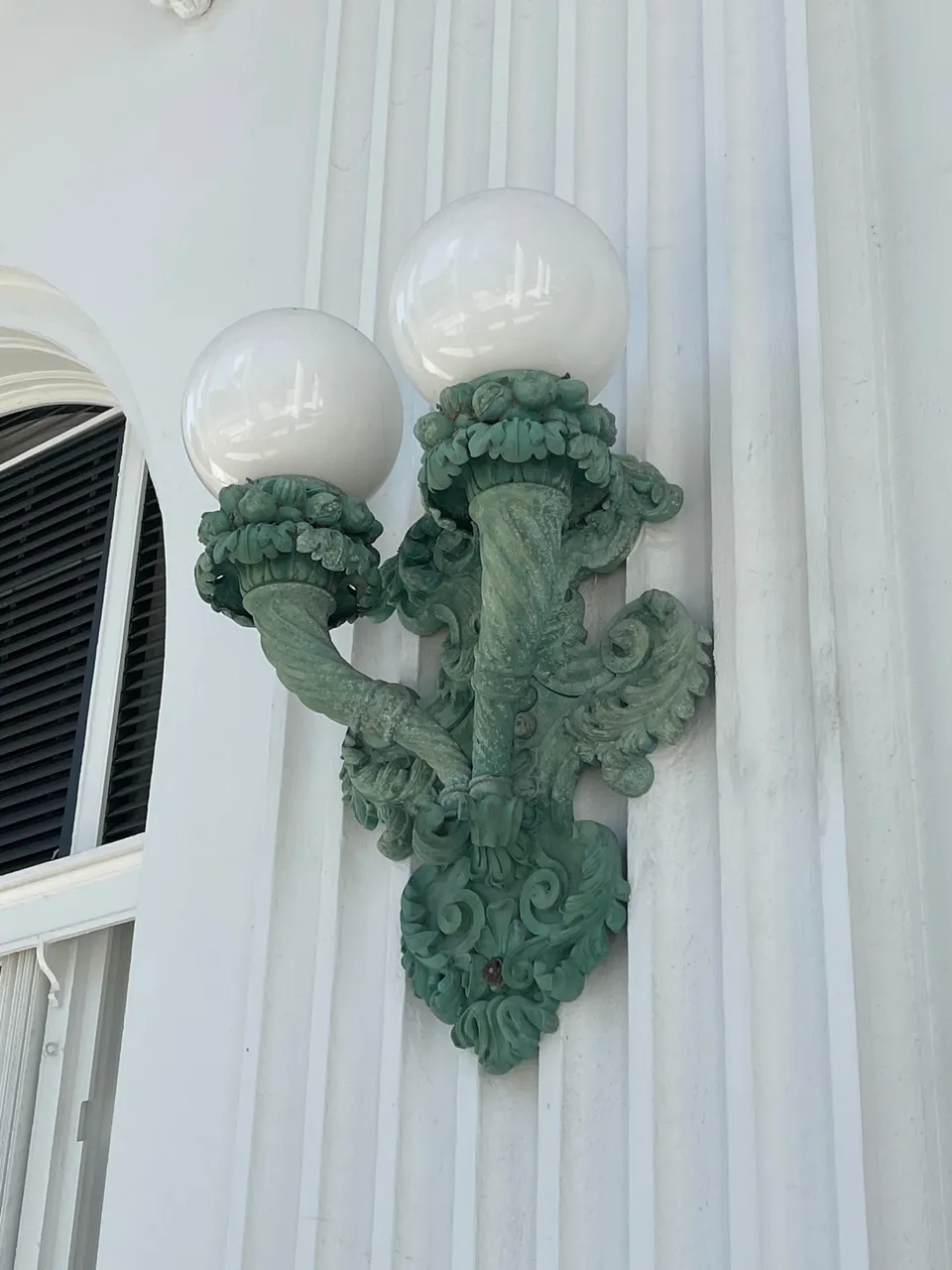
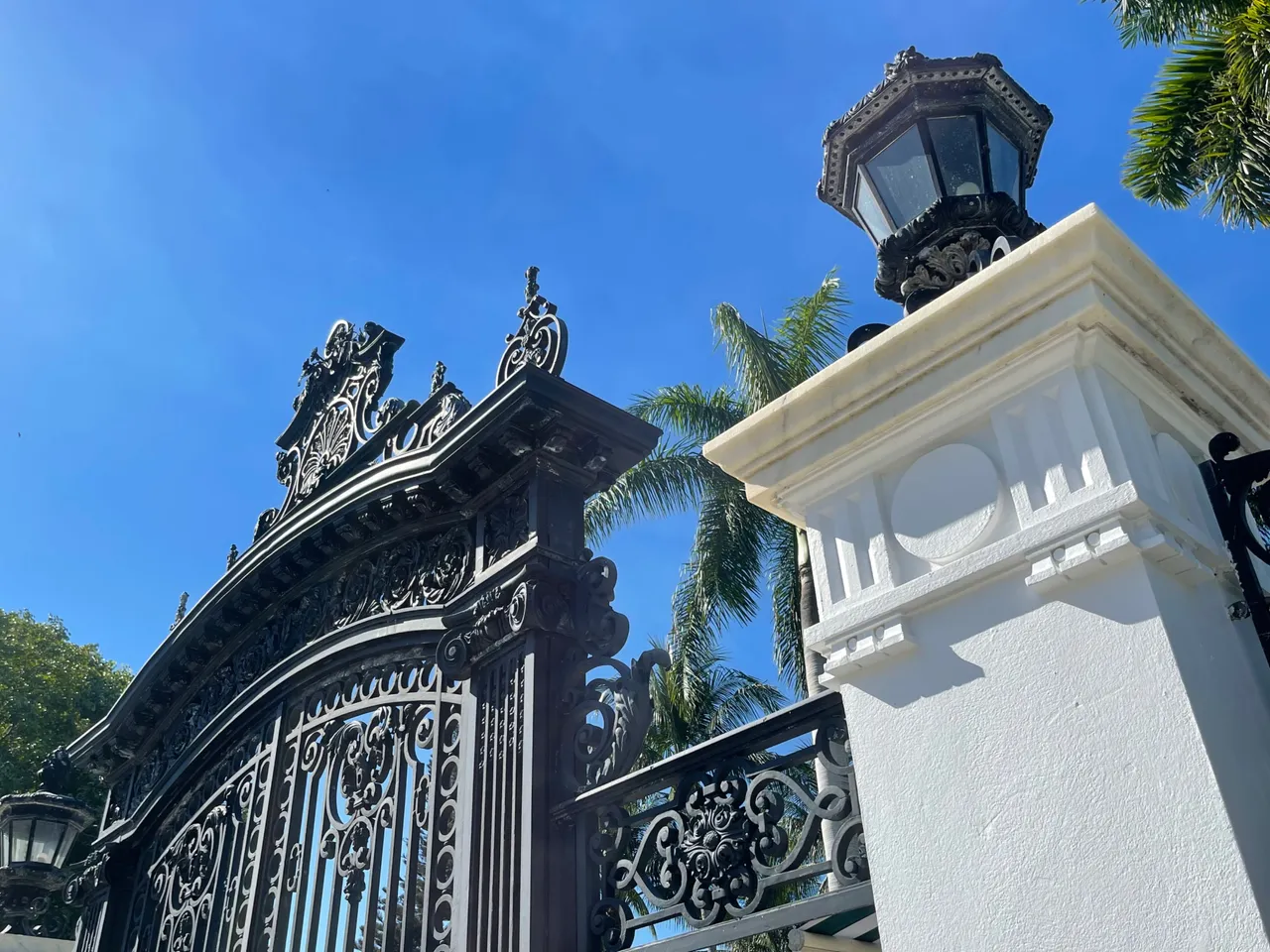

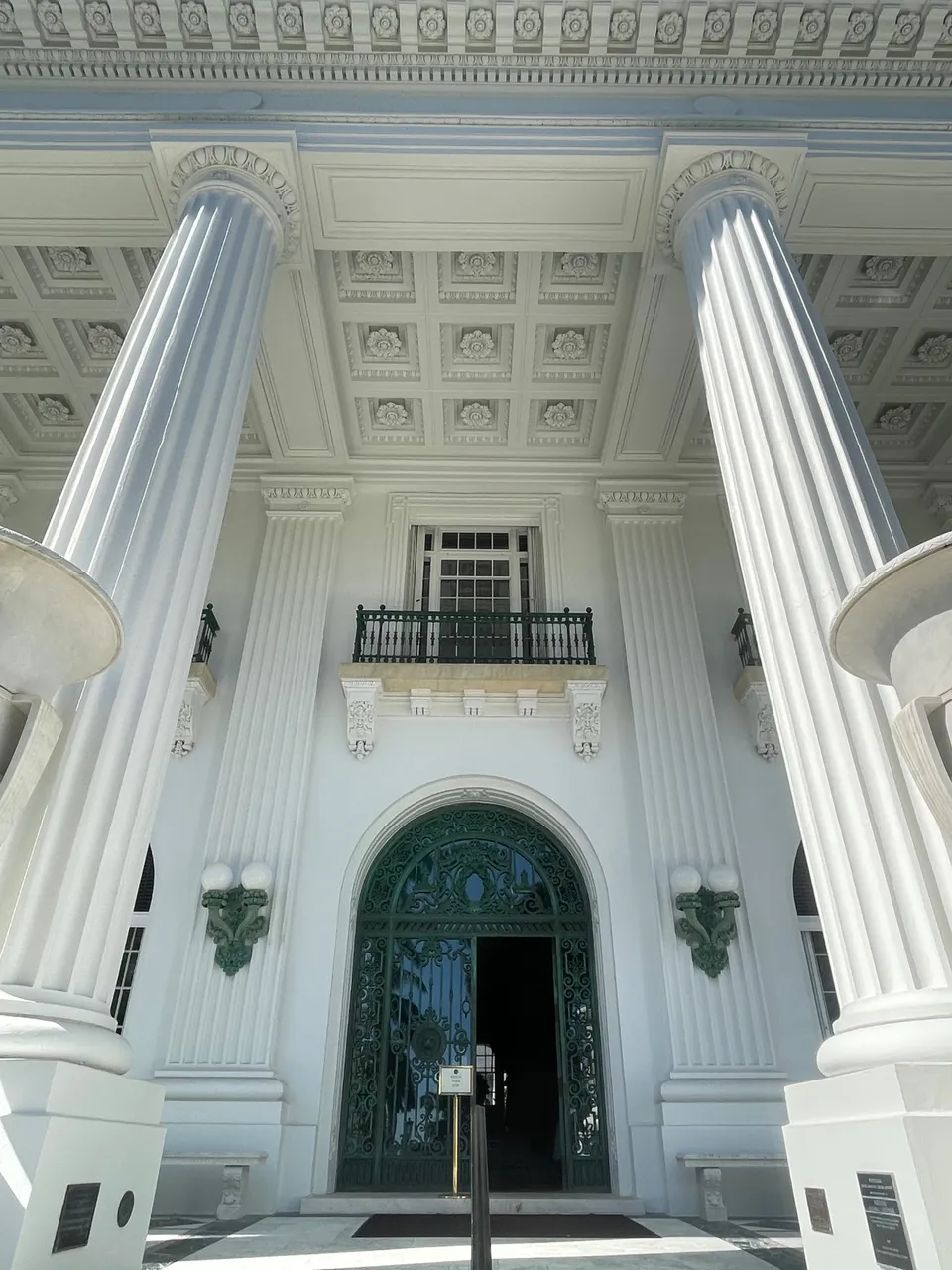
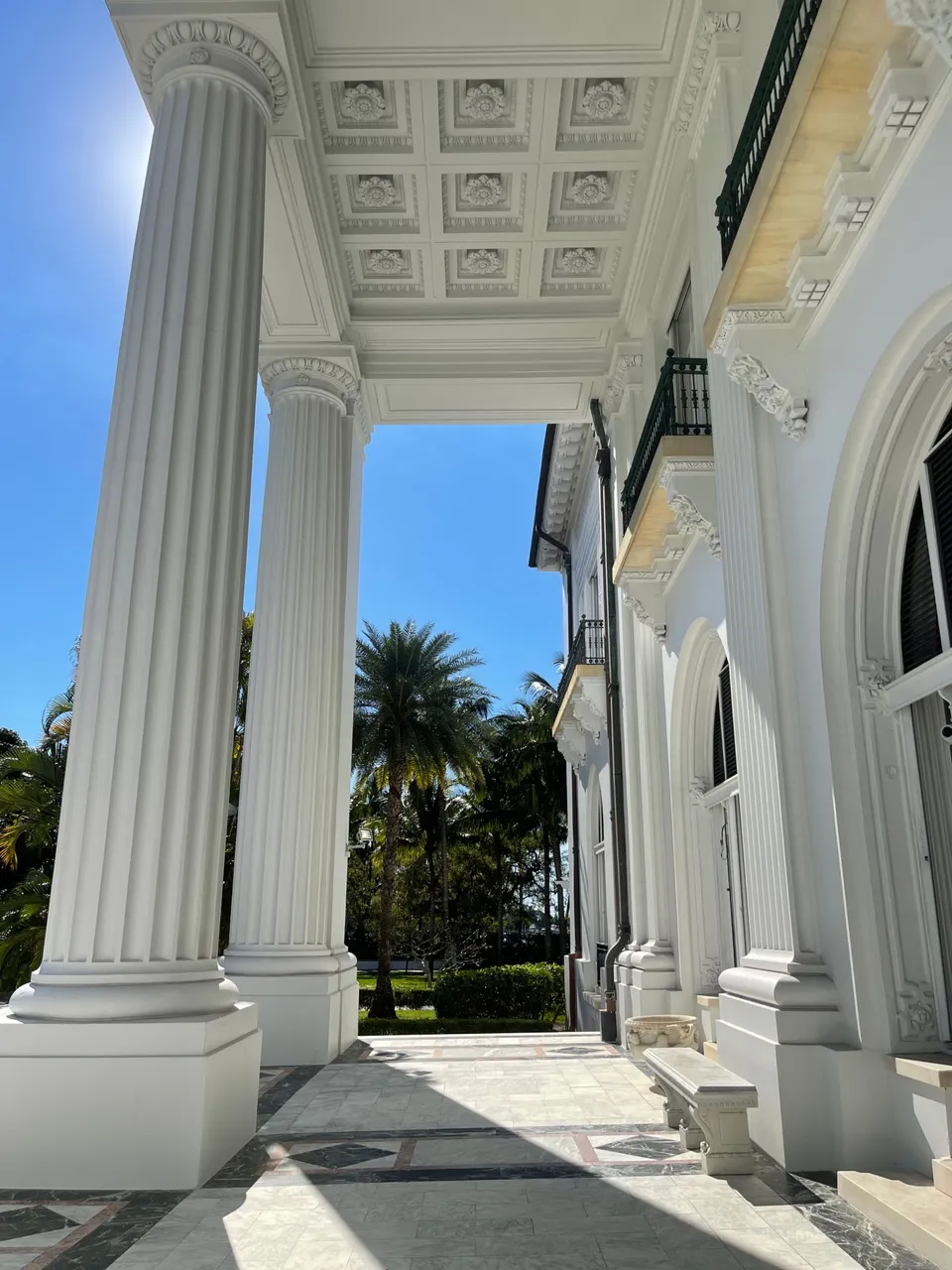
The large marble urns are carved with Bacchanalian scenes.
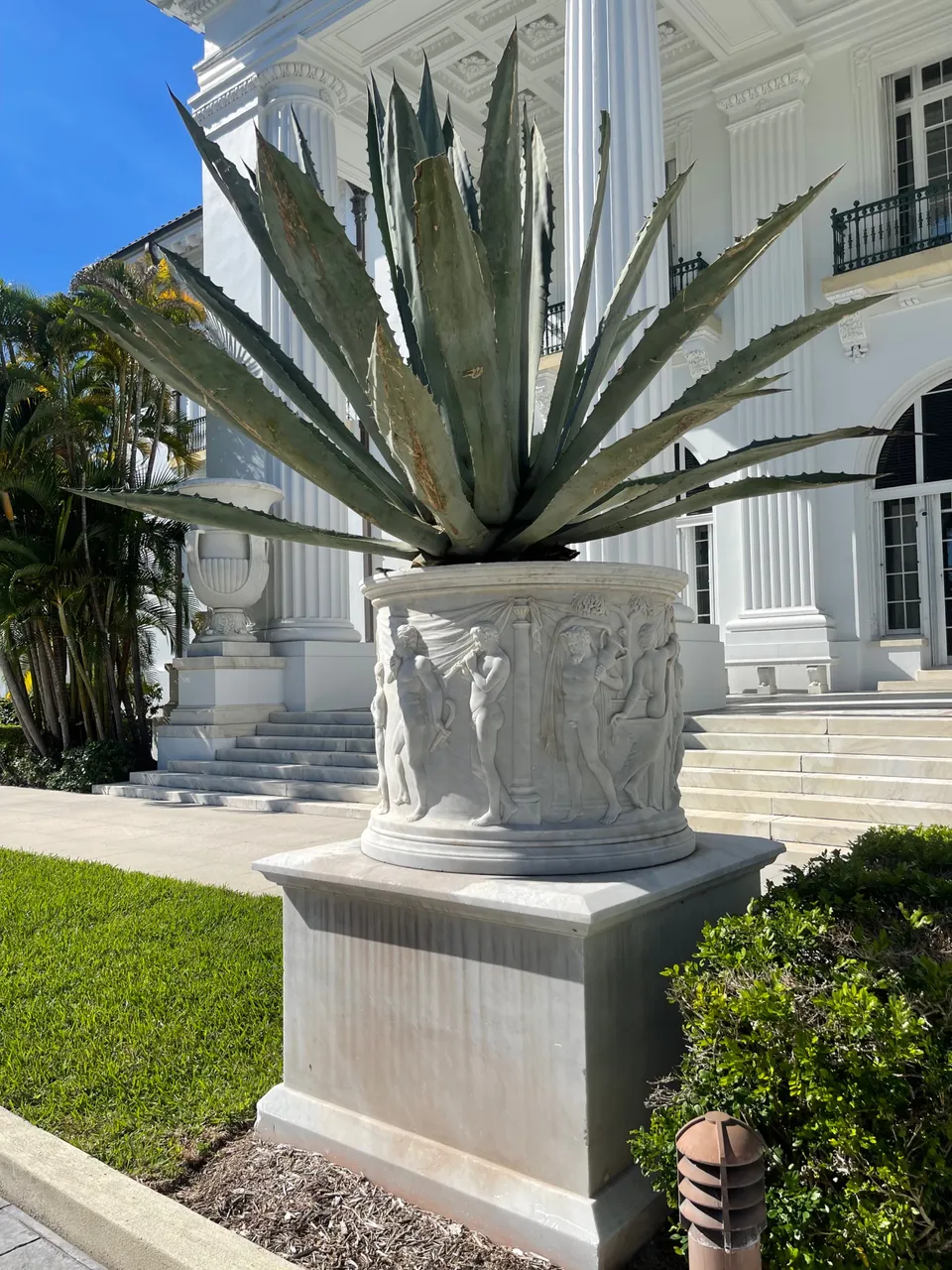
Whitehall’s massive bronze doors are welcoming anyone who wants to get a sense of a rich culture of this private house. Two lion heads are ancient symbols of the sun, they are the central design of Whitehall’s bronze doors.

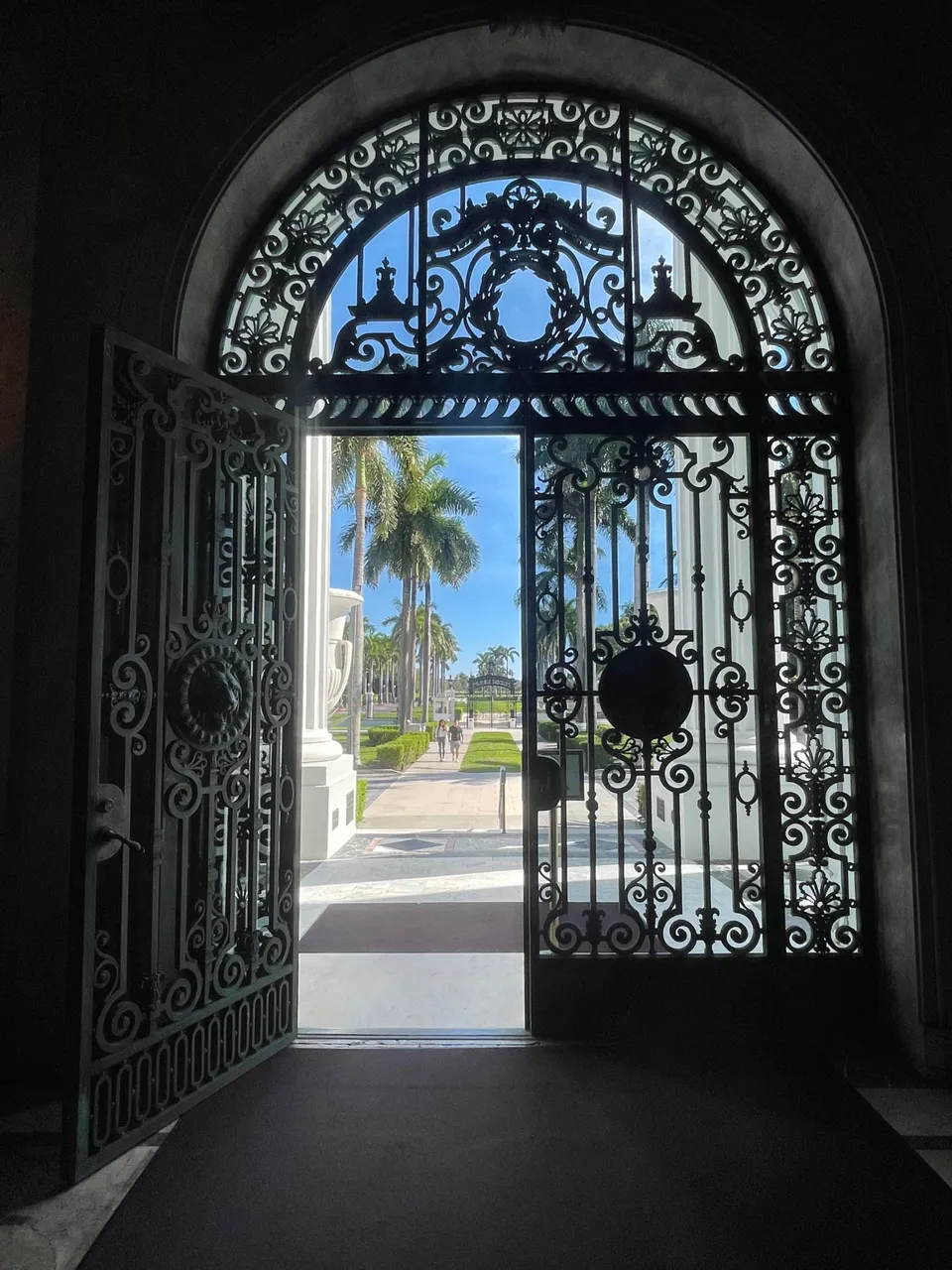
Entrance and the Grand Hall.
The first floor of Whitehall was designed to welcome and entertain guests. Whitehall's 5,000 square-foot reception hall was designed to be the largest of any room in this Gilded Age mansion.
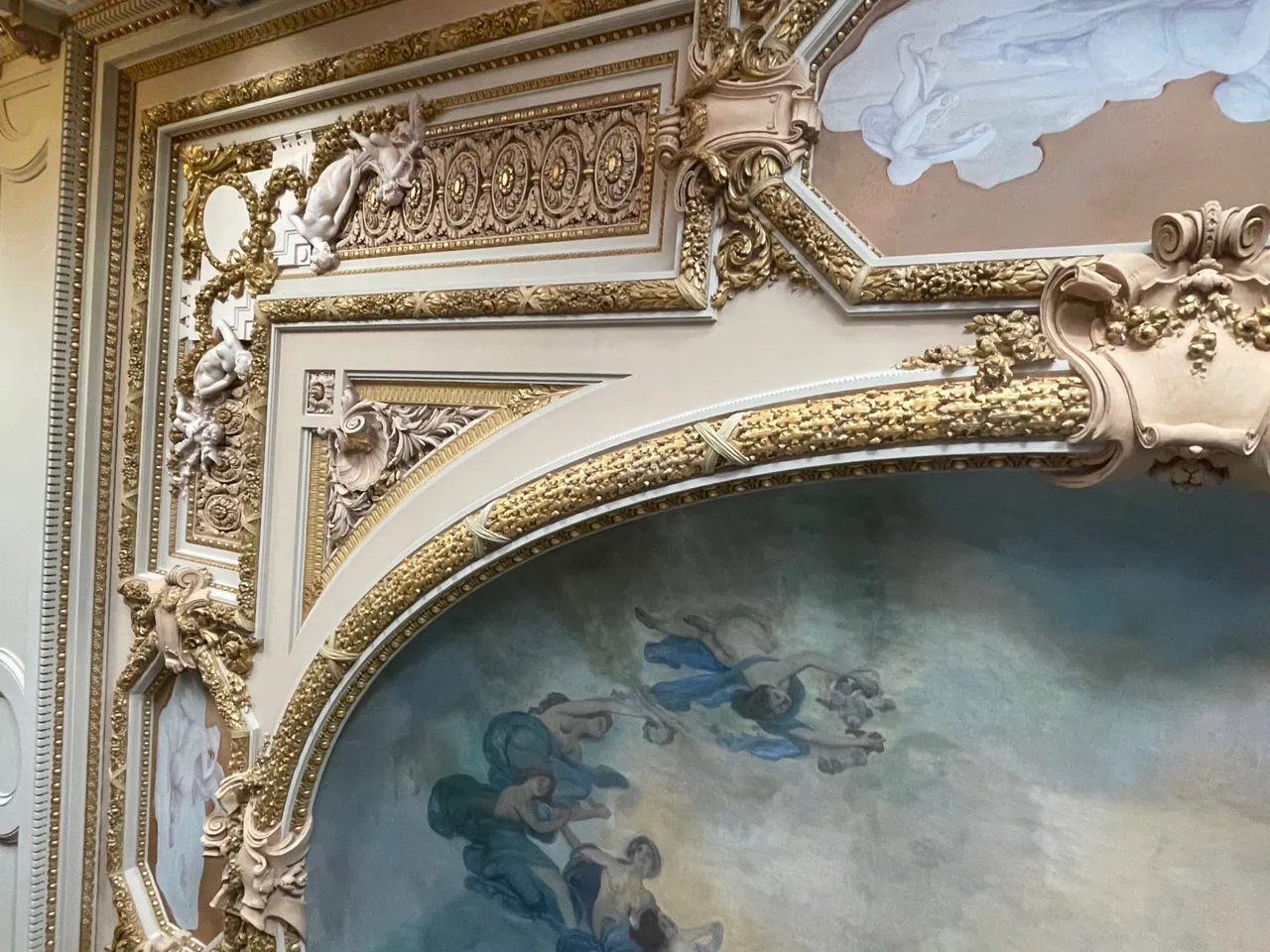
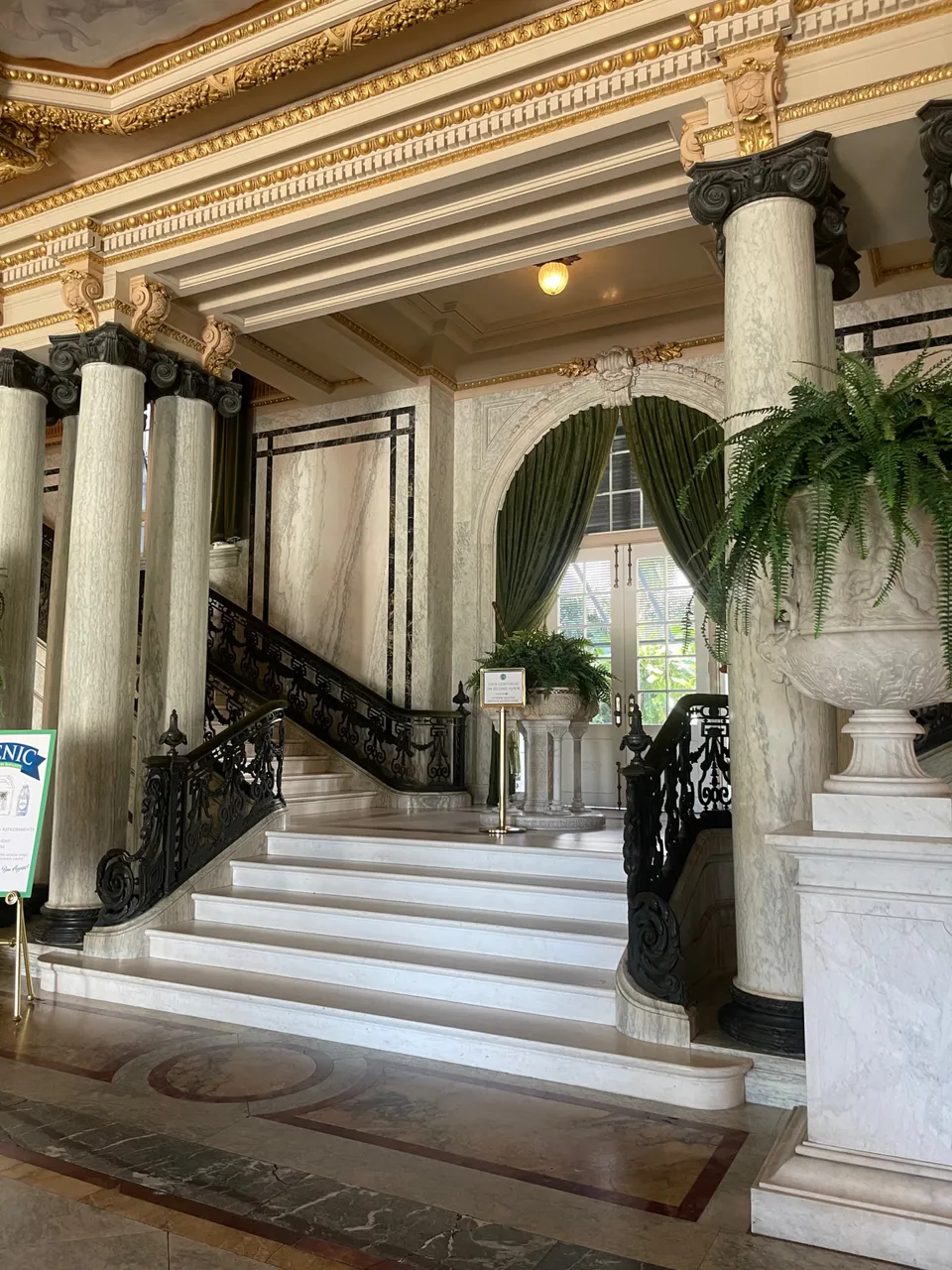
As you face the Grand Staircase, on the left is a deep green marble table. It was designed specifically
for this room by the New York design firm of Pottier & Stymus (probably one of the famous firms in those days). On top of the table there is a bust of Caesar Augustus, a nineteenth-century copy of an original Roman marble sculpture.
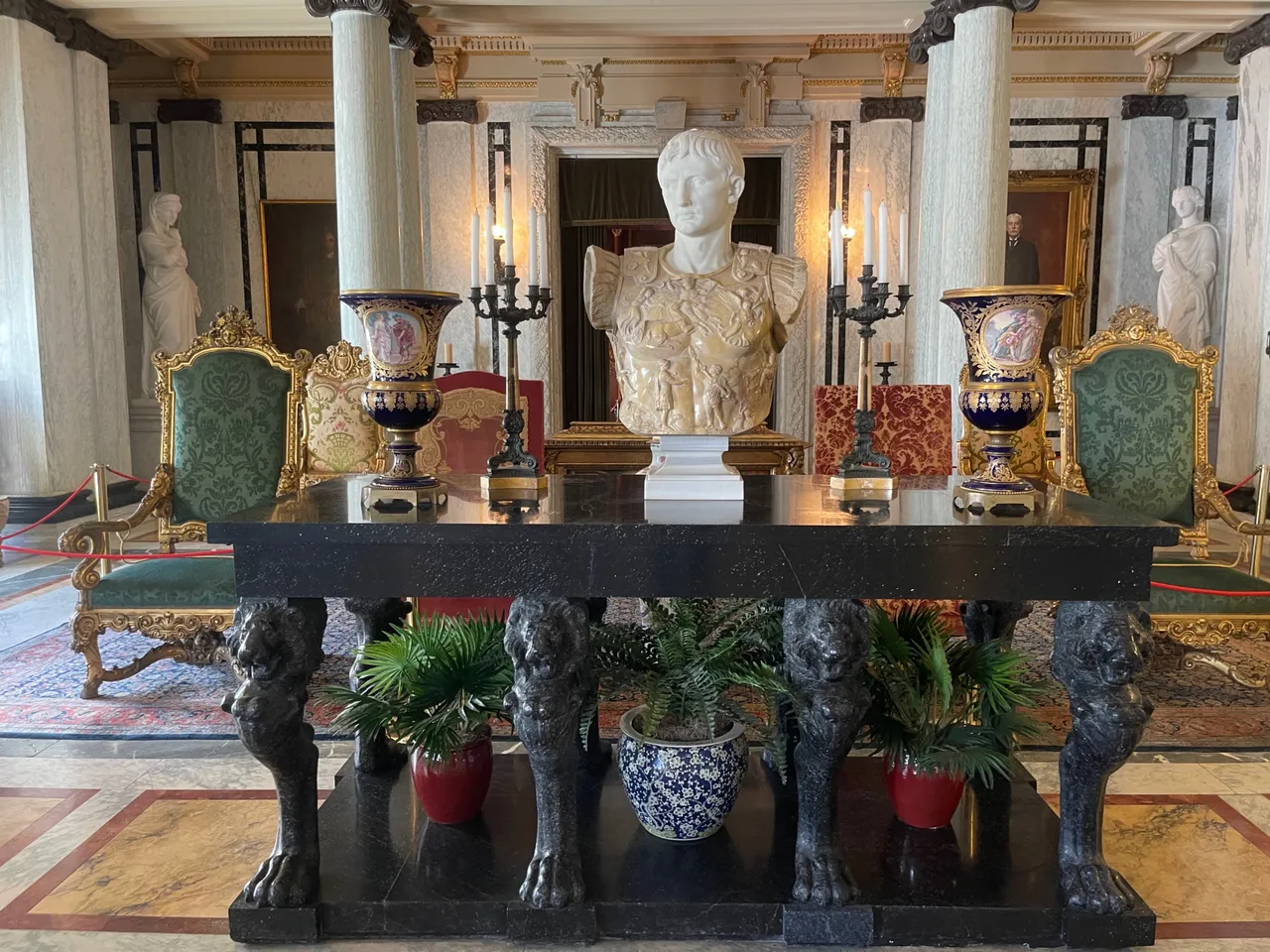
This bust was showing American interest in ancient Rome as a prototype for the great
society America thought would become. Flagler and and other rich businessmen witnessed America‘s cultural evolution.
To the left of the central stairs is a late nineteenth-century rosewood and gilt bronze rococo style clock made by François Linke. It’s amazing that the clock still runs.
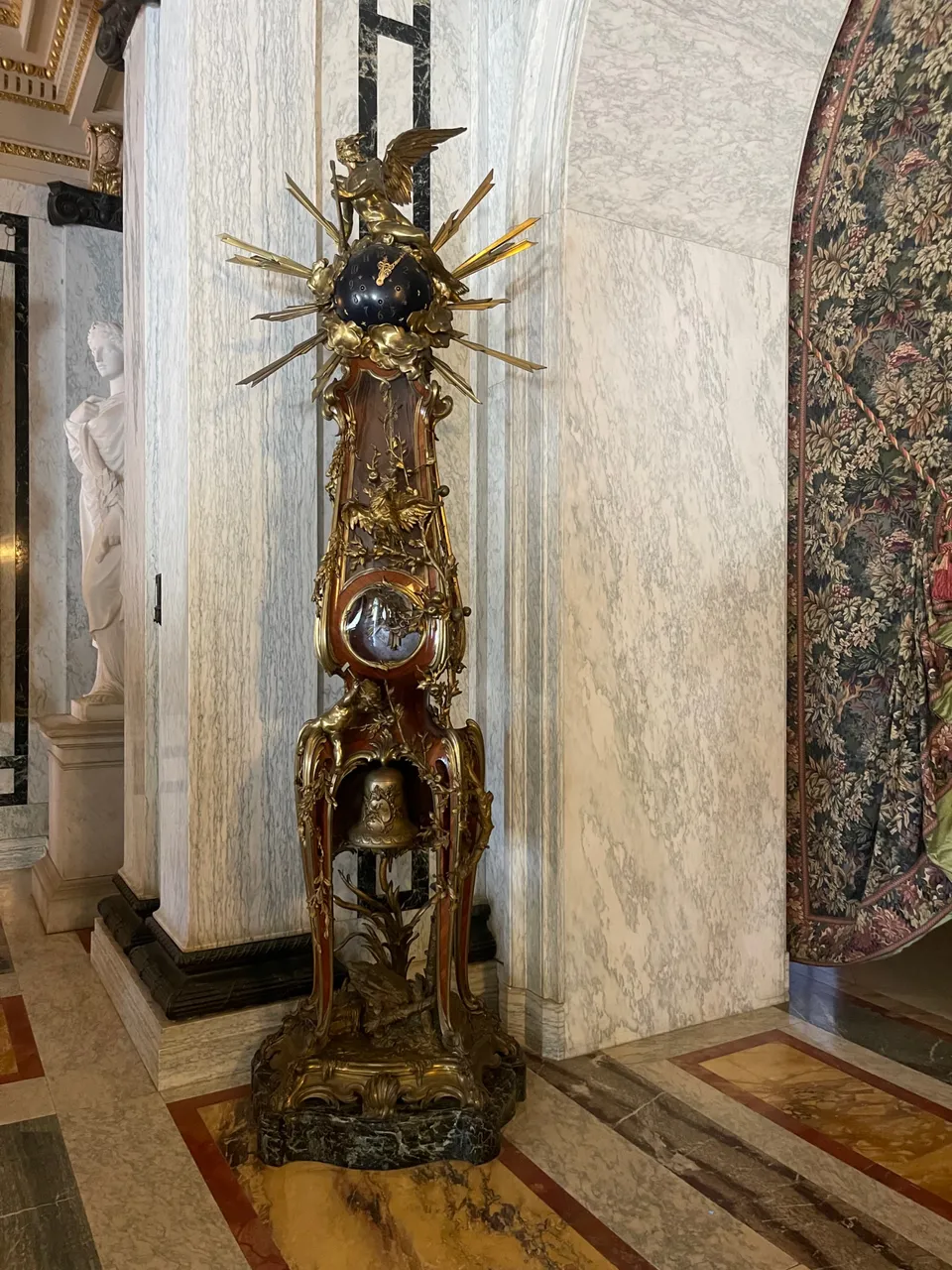

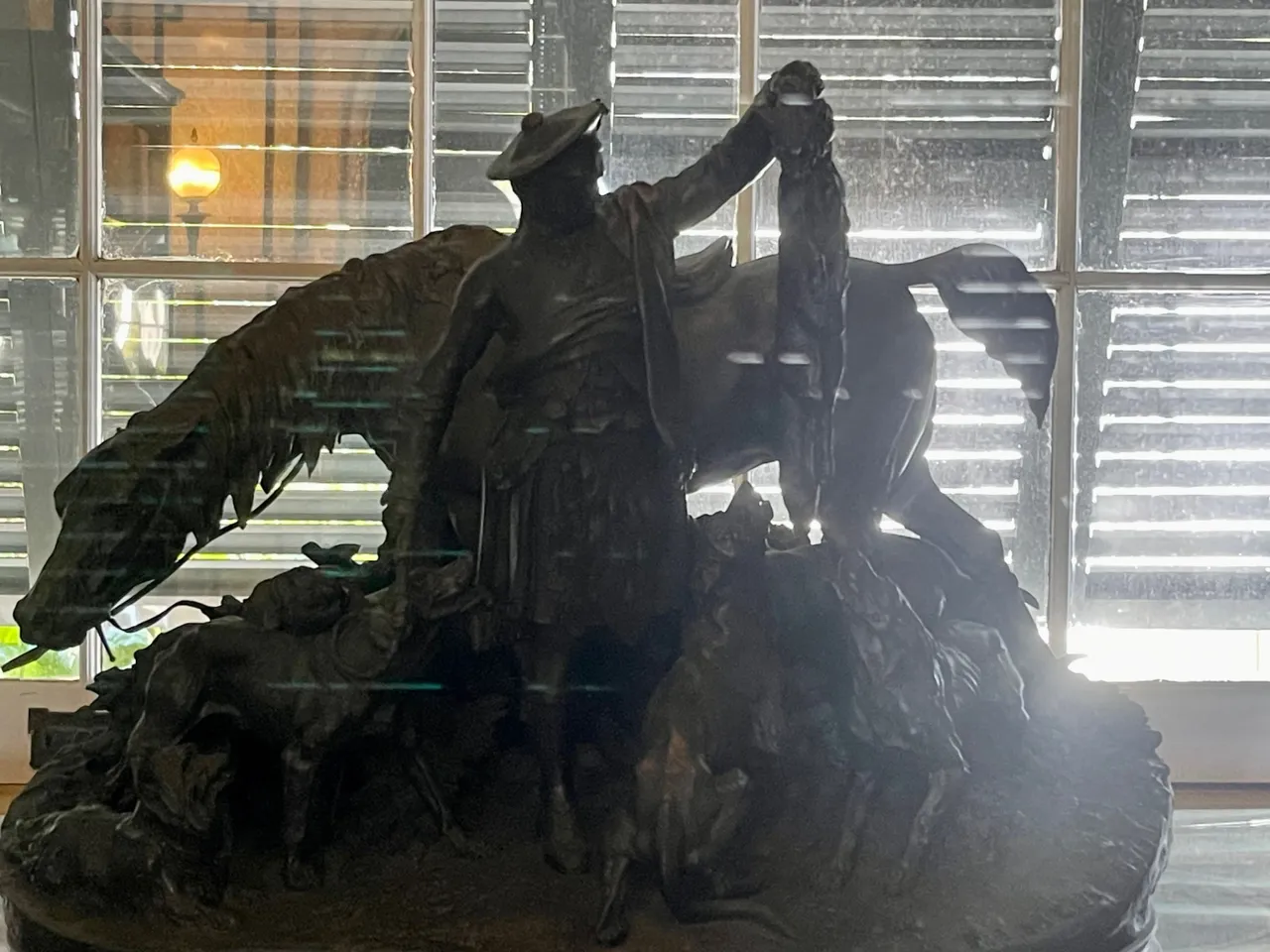
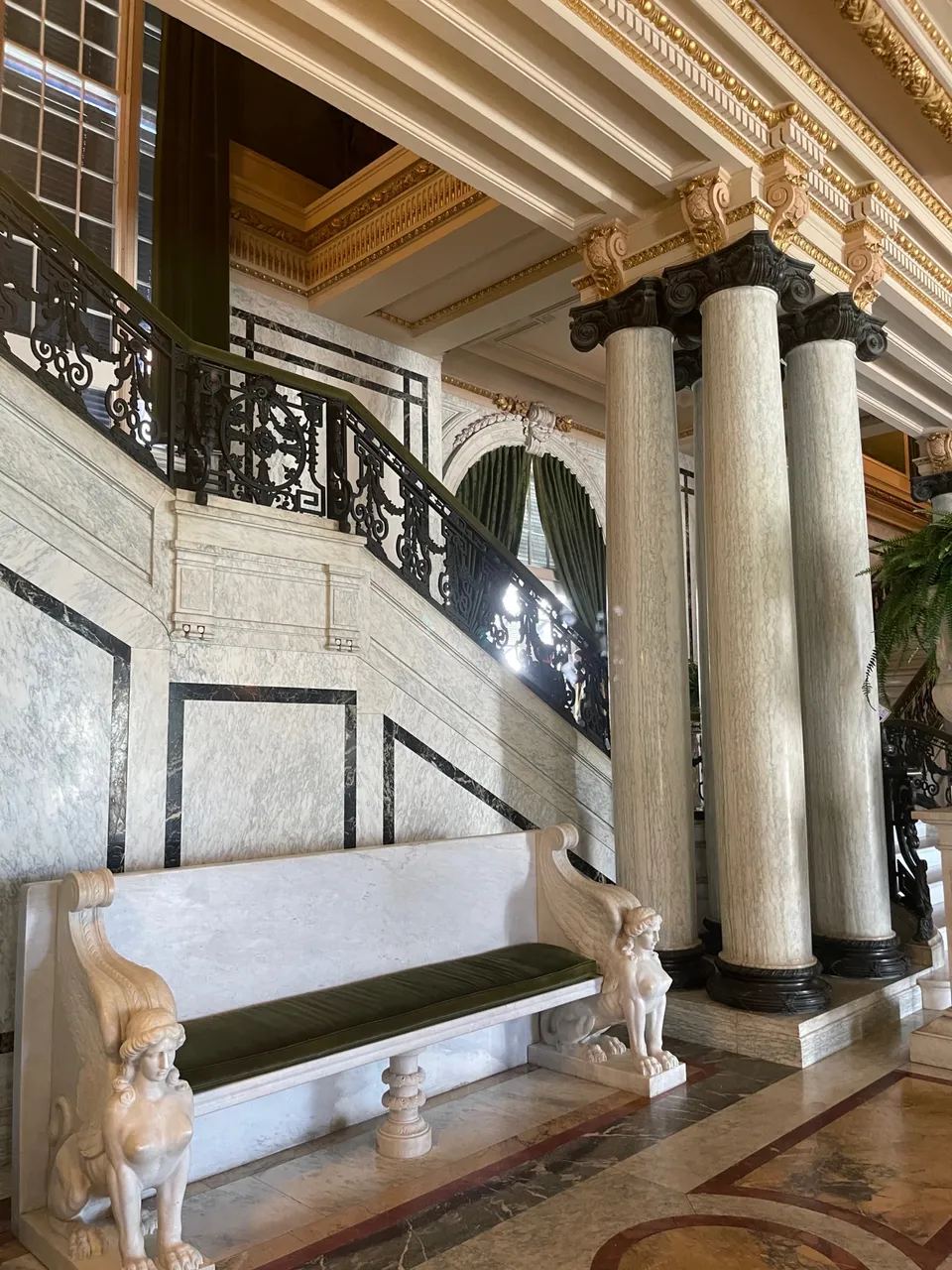

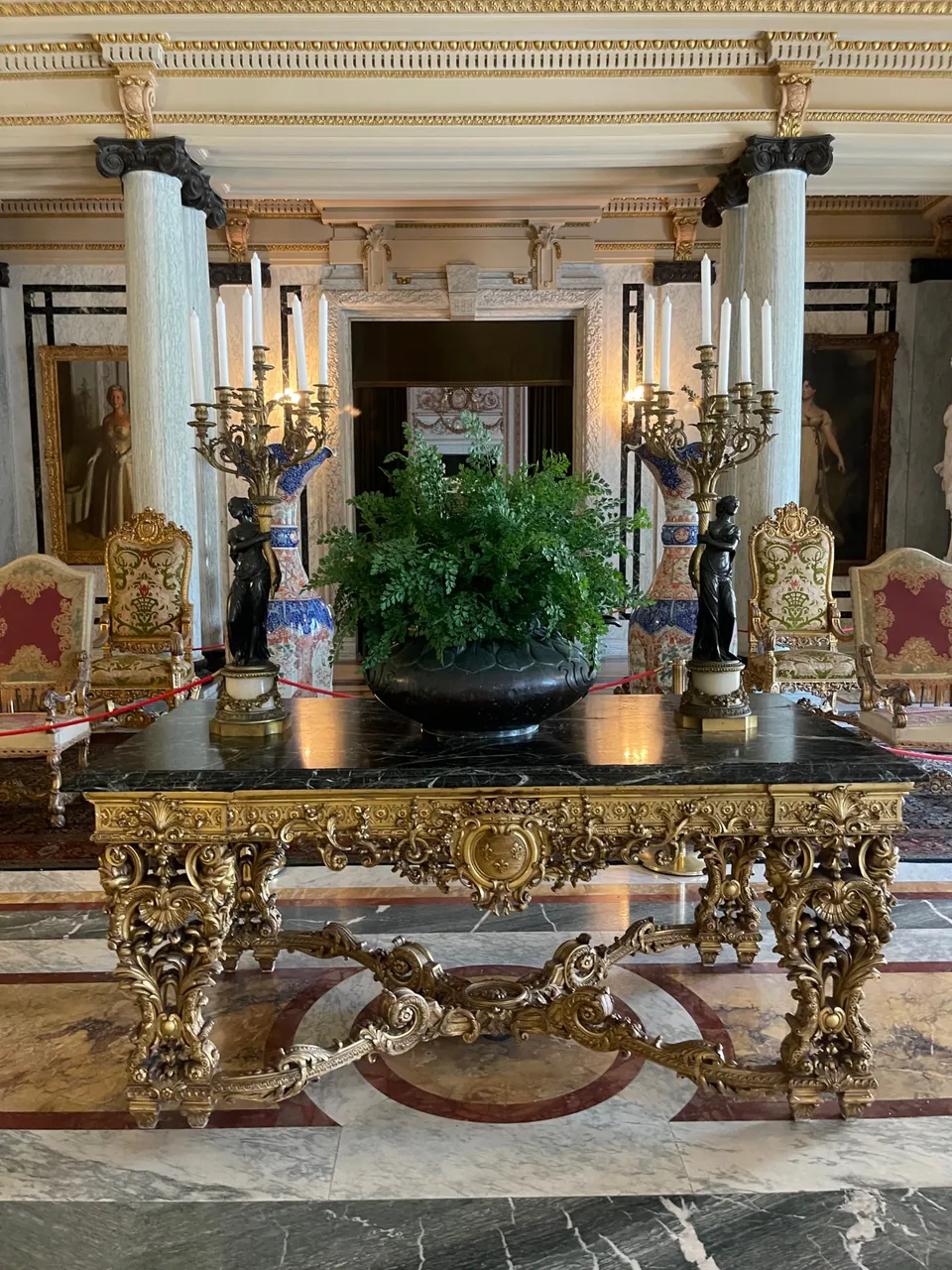

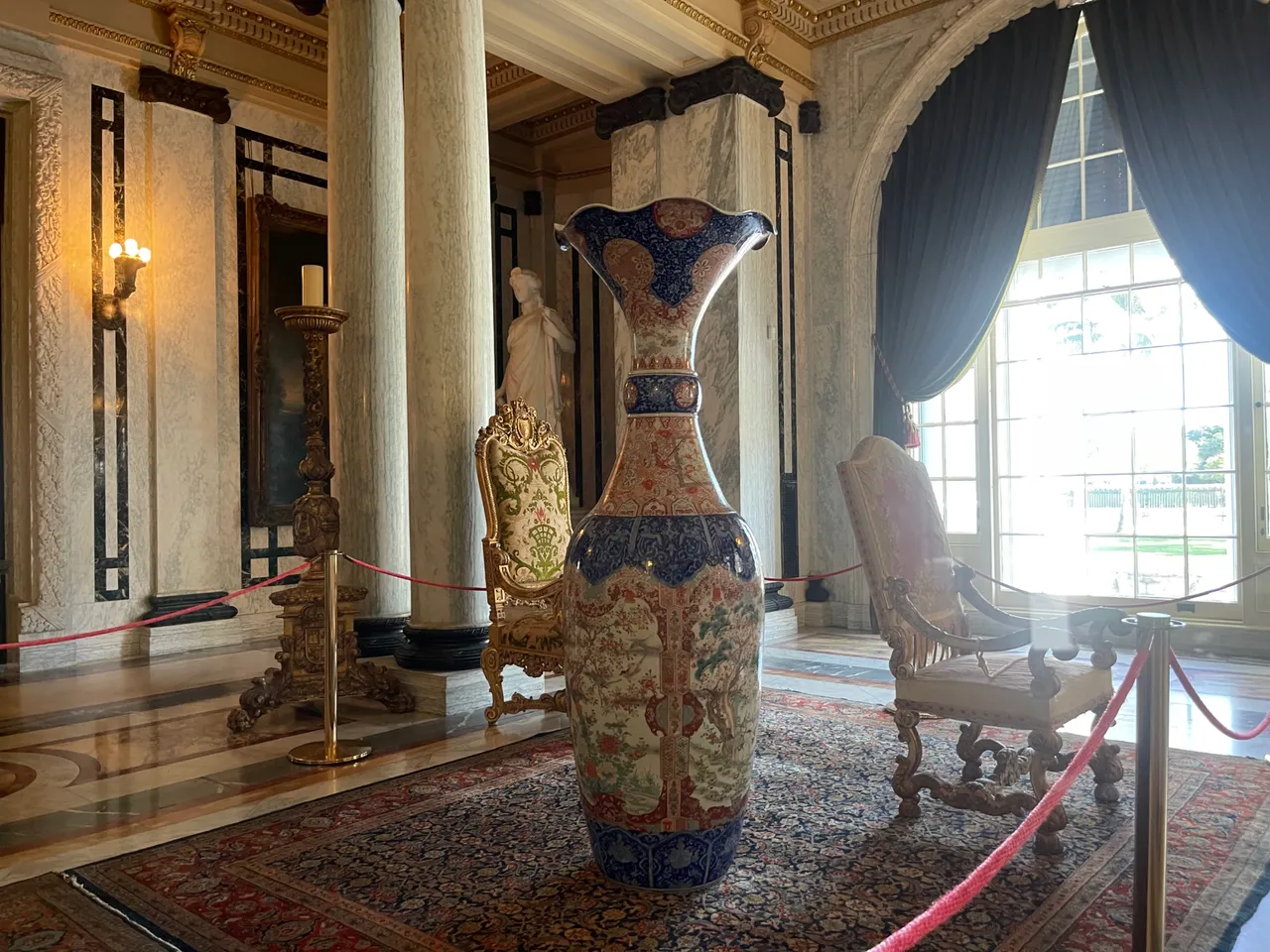
All the information about this place is taken from the museum with my edition.
Photo credit: @artmom
I hope you enjoyed the tour!
| Device | IPhone 12 Pro |
|---|---|
| Theme | Architecture |
| Object | The Flagler Museum |
| Captured by | @artmom |
Thank you for visiting!